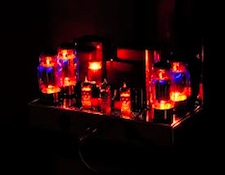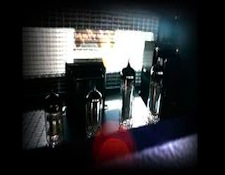It’s the time of year for saving money!

In an earlier article, I wrote about a $5,500 amplifier with a
gorgeous titanium-finished machined aluminum faceplate and handles that the
manufacturer told me accounted for a full $1,000 of its suggested retail price.
In that article I told you that when I asked him why he didn’t just leave off
the fancy façade and sell it for $4,500 his answer was that, without it, he
probably wouldn’t sell any amplifiers at all.
Is that true? Given exactly the same performance and exactly
the same sound for $1,000 less money, would you really not have bought it?
In another instance, a manufacturer friend of mine brought out
a truly spectacular amplifier priced at only $1,295 and, instead of having
people standing in lines, waiting to buy it, it was, at best, an unremarkable
seller. The problem – in my humble-but-yet-to-be-proven-incorrect opinion – was
that it was simply priced wrong.

The amp was solid state pure Class A, with a real output of
about 130 watts per channel at 8 Ohms. With declining load impedance, it would
double-down to about 800 watts per channel and was, in Class AB mode, capable
of “flash” output peaks of nearly 1600 watts per channel. It was also great
sounding and, as must be obvious, HUGELY dynamic.
Instead of calling it a 130-watt amplifier, though, the
manufacturer decided to rate it at just 75 watts per channel and brag about its
great “headroom” to potential buyers.
What he neglected to realize was that even then (and this was
quite a while ago) $1,295 was a difficult price point: For non-audiophile buyers, it was simply too
expensive. Why spend more than a thousand dollars for a basic amplifier when
they could buy a whole receiver for just a couple of hundred? For wannabe audiophiles,
it was too low-powered. Why pay thirteen hundred dollars for 75 watts when for
the same money they could buy 300? And for committed “High-Enders” it was too
cheap. For only $1,295, how could it be any good?

What the manufacturer SHOULD have done was to rate it at 35
watts per channel and price it at $3,500.
Affluent audiophiles were already used to high-priced 25-watt amplifiers
from Mark Levinson, Classe Audio, and others, so getting 10 watts more for just
$3,500 would seem to be a bargain, and people really WOULD line up waving
money. Besides, people with $3,500 to
spend would more likely have speakers and other related equipment good enough
to allow them to fully enjoy the amp’s genuinely outstanding performance, and
when they discovered that it would do real, live, no-kidding 1600 watt peaks,
word would spread and it would quickly become an “in-group” classic.
That amp, incidentally, had a plain sheet metal faceplate and
no handles at all.
Manufacturers are always faced with compromises, and among them
are the genuinely difficult questions of – once you’ve got a product you’re
satisfied with – what do you call it; how do you present it (in terms of
cosmetics); and how do you price it? Just having a good product isn’t enough,
because different people have different ideas of what “good” means and, even if
some universal standard of good could be established, they would still all have
different ideas of what a particular kind or level of good is worth.
One option might be for manufacturers, just as I hinted at
earlier, to offer different versions of the same product in different states of
“dress” at different prices. Loudspeaker
manufacturers have done this for years, with the same drivers and crossovers
arrayed (ala Bozak, Electro-Voice and others) either vertically or horizontally
or, as Avalon and others have done (and may still be doing), offering exactly
the same everything, but in different woods or finishes for prices that may be
as much as many thousands of dollars different.

Are you really only after the performance? Would you buy the
“Plain Jane” version if you could save some money? Or would you rather pop the
bigger bucks for prettier or more impressive gear? If they were otherwise
exactly the same products, would you have bought the unadorned version of the
$5,500 amp for $4,500, or the pretty version of the $1,295 amp for something
more? What about your wife? Can you not
buy that great but ugly thing because she won’t allow it in the house? Could
you convince her to change her mind if it looked better, even if it were more
expensive?
What do you think – performance with looks versus price without
cosmetics?
And
in the end you get to take your pick!





